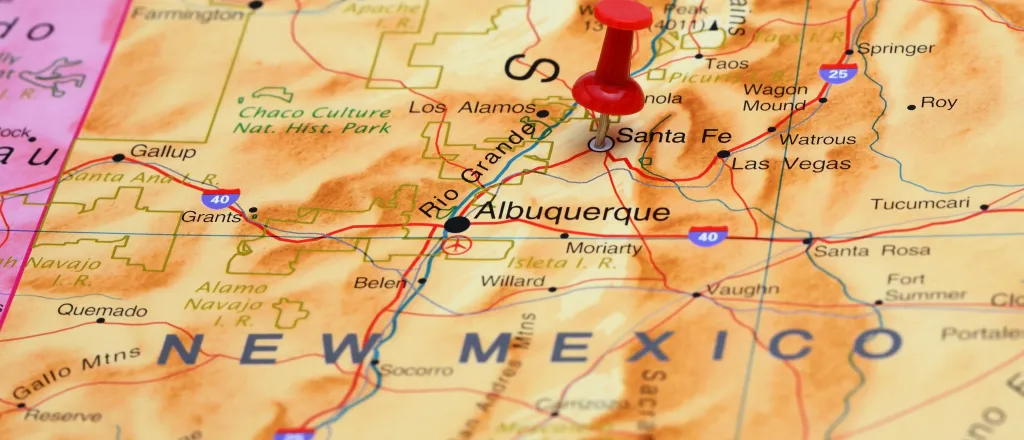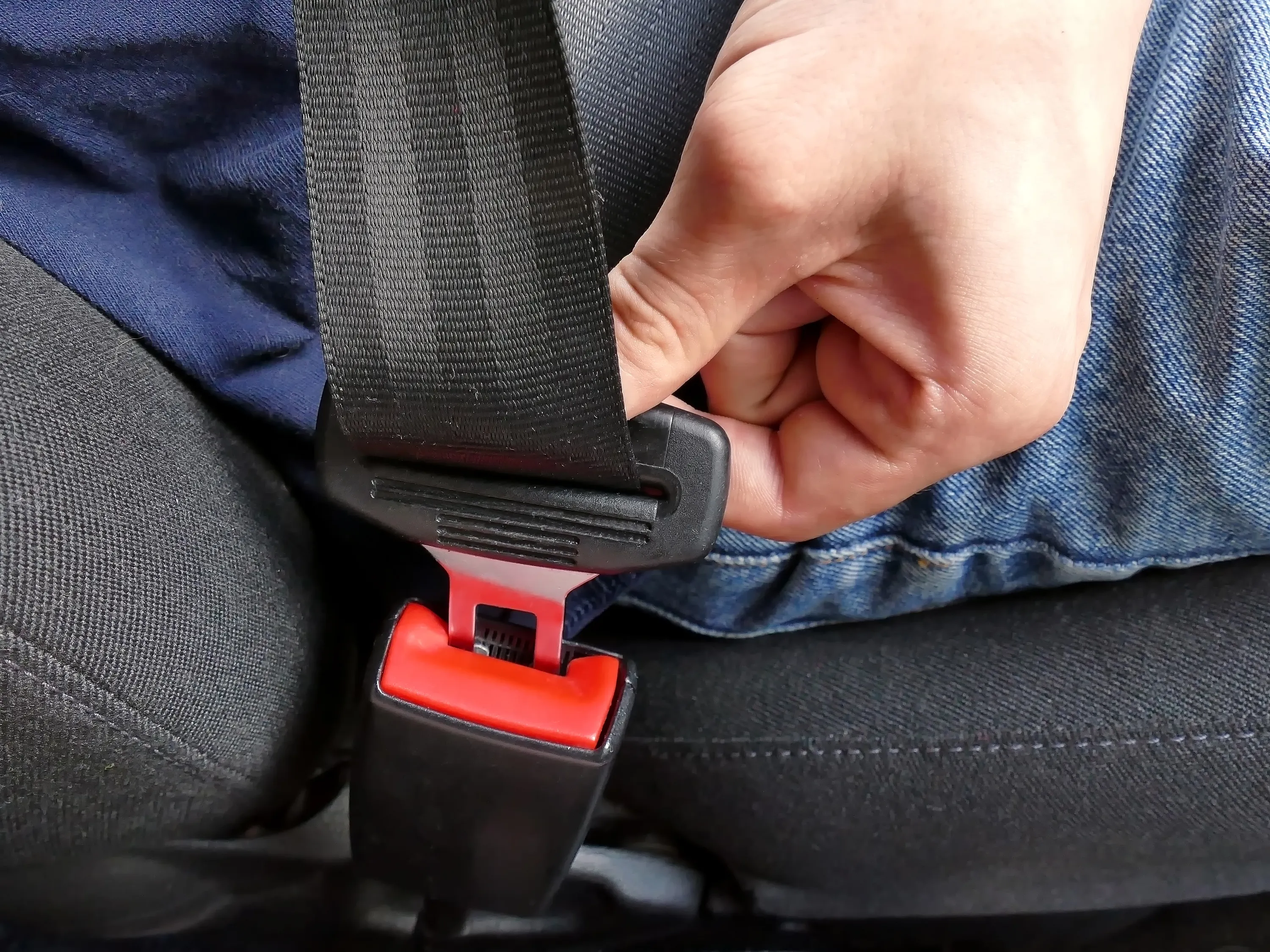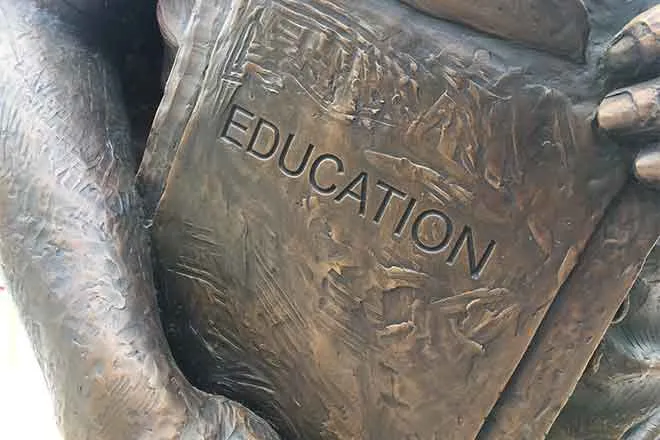
New Mexico counties reduce recidivism through RISE program
Click play to listen to an abbreviated version of this article.
(New Mexico News Connection / The Daily Yonder) When Vivian Montano was in jail, her favorite day of the week was Tuesday. That was the day she, along with a small group of other women, would be transported nearly 90 miles to the Olive Tree Creative Arts and Community Center for a day of behavioral health programming.
The Olive Tree “kept me going,” Montano said. Weekly therapy sessions, including moral recognition therapy and art therapy, helped Montano face the rest of the week in jail and prepare for her future. She refers to the staff of the center as her “guardian angels.”
“I’m so glad they were here because I don’t know where I would be without them,” Montano said.
The programming Montano attended is part of New Mexico’s RISE (Reach Intervene Support Engage) program, which was launched in 2019 to address the dearth of behavioral health services in county jails and detention centers across New Mexico. In addition to therapeutic services inside jail facilities, participating counties are also required to provide intensive case management and community re-entry services.
Since 2019, the program has served more 2,490 participants, according to New Mexico’s Behavioral Health Services Division (BHSD). The agency oversees $4 million in RISE grants awarded to 14 counties across the state.
Because 10 out of the 14 participating counties are rural, state administrators have emphasized the importance of avoiding one-size-fits-all solutions, said Anita Mesa, who supervises the program.
“The innovation of this program is allowing each county to tailor the program in a way that works for their community,” Mesa said.
RISE in Sierra County
This approach is critical to clients like Montano, who lives in Sierra County, a rural county in southwest New Mexico where behavioral health resources are scarce.
Sierra County residents have been disproportionately affected by the opioid and other drugs epidemic, with overdose rates well above state and national averages. And as the “sixth-poorest county in the second-poorest state, Sierra has few funding sources to combat its substance abuse problem,” according to the Bureau of Justice Assistance, a federal office that provides grant and policy assistance to state, local, and tribal justice systems.
Incarceration has mushroomed during the drug epidemic. From 2005-2015, Sierra County’s jail population increased 342%, the largest increase of any county in New Mexico, according to the Vera Institute.
But in the face of such dire statistics, Sierra County’s RISE program, implemented by the Olive Tree Creative Arts and Community Center, has risen to the challenge.
Lisa Daniel is the executive director of the Olive Tree. She says that meeting clients’ basic needs is the first step to ensuring success in the program. Food, state documentation, and housing are program priorities.
Often, when her clients get out of jail, “they have nowhere to go,” Daniel told the Daily Yonder. “And we can’t work on behavioral health or substance abuse issues if clients are worrying about what they’re going to eat and where they’re going to sleep.”
In 2020, the Olive Tree began a transitional housing program, which is the “crown jewel” of Sierra County’s services, according to Mesa. The center leases a motel, where clients can stay while they apply for public or private housing and participate in daily programming at the community center.
Of the 30 people who have participated in the transitional housing and 90-day behavioral health program, none has returned to jail, Daniel said.
Sierra County’s RISE program also offers other forms of support such as intensive case management.
Katharine Elverum is a senior case manager and court liaison at the Olive Tree. She tracks each client’s case, advocates for them in court, and makes sure they can follow the conditions of their release. This is critical because failure to appear in court—regardless of lack of transportation or other issues beyond a client’s control—often results in their rearrest.
Elverum also helps clients enroll in state services, like Medicaid and food assistance, and get medical and psychiatric services.
This type of wrap-around support has been proven to reduce recidivism, or the number of incarcerated people who return to prison or jail. In 2019, when the RISE program began, Sierra County had a recidivism rate above 90%. Now, Daniel estimates a county-wide rate of around 75%. Among RISE program participants, the estimated recidivism rate drops to 30%, Daniel said.
The RISE program has facilitated a similar reduction in recidivism rates across participating counties. For example, in 2023 rural Roosevelt County reported a 60% reduction in recidivism among men who participated in the RISE program and a 70% reduction among women participants.
Sustained programming and support is the key to reducing recidivism, according to Virginia Lee, Sierra County’s grant manager.
Providing programming in custody was an important start, but once people were released, much of their progress was left at the door, Lee told the Daily Yonder. “There was no follow-up, no medication. They were doing well in the programs, but without wraparound services, they just went right back to where they were.”
A Rural Model
The Olive Tree also implements several other programs and grants, including the Comprehensive Opioid, Stimulant, and Substance Abuse Program (COSSAP), Law Enforcement Assisted Diversion (LEAD), and Behavioral Health Intervention Zone (BHIZ). The center also supports Sierra County’s Crisis Response Team.
Additionally, the center provides GED tutoring and classes in life skills, anger management, art therapy, and cognitive behavioral therapy to community members at large.
The Olive Tree wasn’t conceived as a one-stop shop for behavioral health in Sierra County. But as the county’s needs became clear, the mission evolved. “The original concept was that we would be a hub, and a resource to direct traffic,” said Elverum. “Well, we ended up absorbing a lot of the traffic.”
That’s partly because Sierra County has few other resources or practitioners. The county has neither a homeless shelter nor a crisis/detox center. Though there are a handful of therapists, there are no practicing psychologists or psychiatrists in Sierra County, according to Olive Tree staff.
Transportation is one of the key challenges for Olive Tree and its clients, who must often travel to Las Cruces (76 miles) or even Albuquerque (148 miles) for services. And because Sierra County has no jail, Olive Tree’s incarcerated clients must be driven nearly 90 miles from the detention center in neighboring Luna County to participate in the center’s programming.
The Olive Tree is located in Truth or Consequences, the seat of Sierra County, which covers more than 4,000 square miles. One of the Center’s employees is based 20 miles away in Arrey, an unincorporated community of several hundred. Daniel is also hoping to hire a mobile community health worker, who will further help fill gaps in small and remote communities in the county.
All of this adds up to an original and innovative model for rural behavioral health services, though Daniel and the rest of the Olive Tree staff are not ones to toot their own horn.
“We became a model only because we had no other resources, and we had to figure out how to make it work,” Daniel Said.
And make it work they have, at least according to Montano. “This program has really helped a lot of people who are going through all sorts of things. And I thank God for [the staff] because they saved my life.”
Anya Petrone Slepyan wrote this article for The Daily Yonder.

















